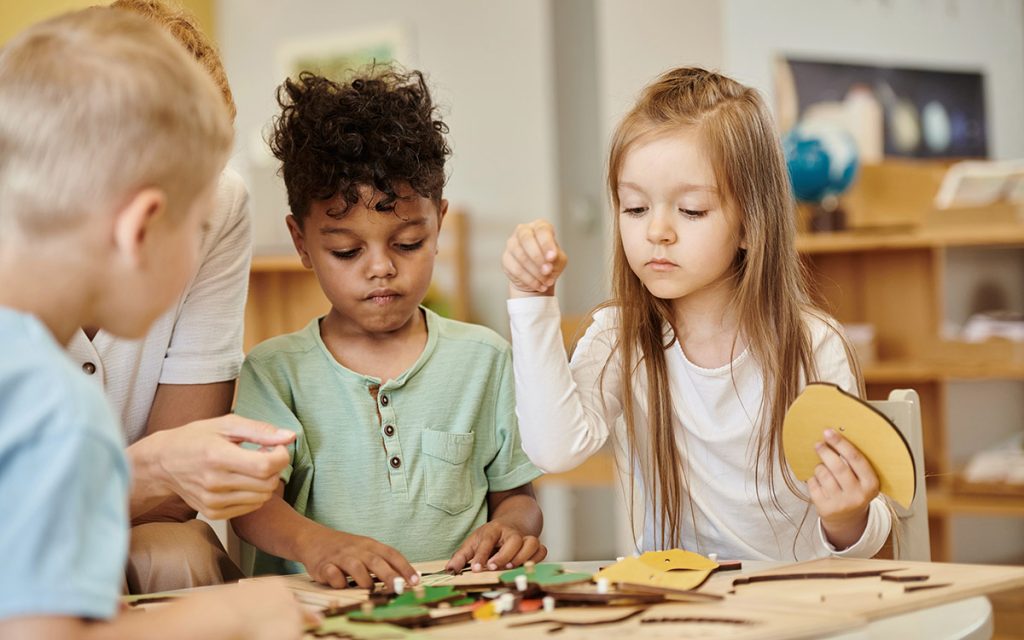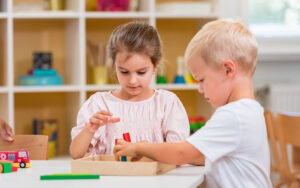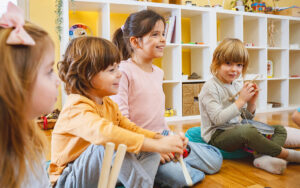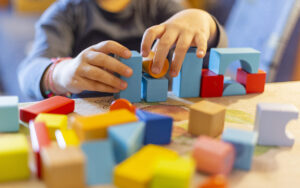Inside the intentional design of Montessori environments that balance independence with order and exploration with discipline.
Step into a Montessori classroom, and you’ll notice something immediately: the sense of calm, order, and quiet concentration. There’s no chaotic chatter, no front-facing desks, and no loud instructions from a teacher. Instead, you’ll find children moving purposefully through the space, choosing their work, and deeply engaged in independent tasks. The Montessori classroom structure fosters this environment, providing a solid foundation for learning within the Montessori classroom structure.
At KV Montessori in Chula Vista, this environment is not accidental—it is a reflection of careful planning, deep understanding of child psychology, and the Montessori philosophy of freedom within structure. The classroom itself, or Montessori classroom structure, is a teaching tool, guiding children toward responsibility, focus, and joyful learning through the principles of Montessori classroom structure.
What Makes the Montessori Classroom Different?
Unlike traditional classrooms, which often revolve around teacher-led instruction and passive student behavior, Montessori environments are designed to empower the child to be an active, self-directed learner.
Key features include:
- Open floor plans with accessible shelves and clearly defined work areas
- Purposeful organization of materials by subject and sequence
- Minimal, natural décor to reduce overstimulation and support focus
- Mixed-age groups that encourage collaboration and mentorship
- Trained educators who act as guides rather than lecturers
Everything in the room—from the lighting and layout to the materials and routines—is curated to support concentration, autonomy, and intrinsic motivation.
Freedom with Responsibility: The Core Balance
Montessori classrooms provide children with the freedom to choose their work, but that freedom is not without structure. Children are expected to:
- Work respectfully with the materials
- Clean up after themselves
- Use materials as intended
- Return items neatly to their place
- Respect the rights of others to work undisturbed
This balance of independence and accountability helps children build executive function skills, such as self-control, time management, and organization—traits that serve them well beyond the classroom.
“True discipline comes through liberty. Freedom is the key to self-development.” – Dr. Maria Montessori
How the Environment Promotes Deep Focus
One of the most remarkable outcomes of the Montessori structure is the development of deep, sustained concentration—even in very young children.
Several design features support this:
- Uninterrupted work periods (typically 2–3 hours) allow children to become absorbed in their tasks without rushing or being pulled away.
- Self-correcting materials promote trial and error without judgment, helping children take ownership of the learning process.
- Minimal external rewards shift the focus from pleasing the teacher to satisfying personal curiosity.
- Freedom to repeat an activity as many times as desired builds confidence and mastery.
At KV Montessori, we observe children entering a flow state—where they lose track of time, become immersed in their work, and develop a powerful connection to learning.
The Role of the Teacher in a Structured Space
Montessori teachers are trained to observe, guide, and support, rather than instruct from the front of the room. They:
- Give individual or small group lessons based on developmental readiness
- Model respectful behavior and grace and courtesy lessons
- Help children resolve conflicts with calm and language-based solutions
- Track academic and social progress through observation and documentation
By stepping back, teachers allow space for the child’s confidence and concentration to grow. The result is a community where children learn not because they are told to—but because they are motivated by their own curiosity and inner drive.
Creating Structure at Home Inspired by Montessori
The same principles that guide classroom structure can support focus and independence at home:
- Provide child-accessible shelves for toys, books, or art supplies
- Offer limited, rotating choices to avoid overwhelm
- Establish quiet time for uninterrupted exploration
- Model tidy habits and respect for shared spaces
- Create morning or bedtime routines with visual charts or participation tools
Parents who integrate these simple Montessori strategies often notice improved cooperation, reduced tantrums, and stronger attention spans.
“Structure isn’t about control—it’s about giving children the tools to discover their own potential.”
Conclusion
A Montessori classroom is a place of quiet purpose, joyful discovery, and respectful freedom. It is carefully structured—not to limit the child, but to liberate their natural abilities. At KV Montessori in Chula Vista, we take pride in creating environments that balance choice with discipline, fostering both independence and community.
Contact us today to tour our thoughtfully prepared classrooms and see how structure and freedom work hand-in-hand to unlock your child’s full potential.






